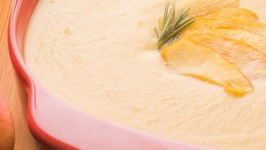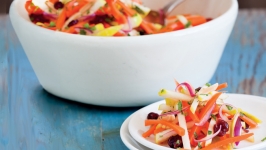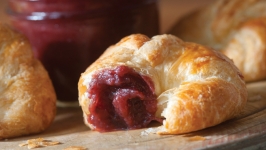A Refreshing Look at the Bay Area Cider Makers and Sipping Spots
In his book The Botany of Desire, Michael Pollan tells us that hard cider was America’s first alcoholic beverage, enjoyed by the early colonists. In fact, demand for hard cider and perry (pear cider) has waxed and waned throughout the centuries, but new cider fandom has been bubbling up with the release of fresh local craft entries offered at cider houses and bars, restaurants, markets, breweries, and even wineries. Here’s a look at some favorite East Bay, South Bay, and Peninsula cider makers and cider sipping spots.
Less High, More Dry
Anyone new to hard cider expects it to be sweet like fall’s fresh apple cider, but many cider makers are crafting very dry, champagne-like bubbly tastes. Cider’s alcohol by volume (ABV) is closer to beer’s and less than wine’s. Like wine, cider is fermented; beer is brewed.
“Cider is nuanced, it’s dry, it’s complex, all of these different things I didn’t realize before I had access to it.”
– Mike Reis of Redfield Cider Bar & Bottle Shop
As in wine, craft cider reflects the terroir of the particular apple or pear orchard. And like wine grapes, apples contain malic acid, sugar, and tannins. The tannins contribute body, weight, and texture. But while wine tannins come from skins and seeds, cider’s come from the fruit’s flesh.
Mike Reis and Olivia Maki, who opened Redfield Cider Bar & Bottle Shop in Oakland’s Rockridge District in 2019, have seen a gradual change in drinkers, from younger imbibers to a greater range of cider curious popping in for a taste. Many are looking for lower-alcohol drinks with refreshing carbonation.
“Cider can scratch that itch,” Maki says. “Cider is nuanced, it’s dry, it’s complex, all of these different things I didn’t realize before I had access to it.”
"Everyone Knows Apples"
“Cider is approachable because everyone knows apples,” says Claudia Derp, co-owner of The Cider Junction in San Jose. “It’s diverse, [ranging] from ciders made [with] specific varieties from local orchards to ciders that are playful and explorative with added fruit, herbs, and spices aging in all kinds of barrels.”
“Most people didn’t start as cider fans,” says Redwood Coast Cider brand manager Christina Krzaszczak, who watches cider enthusiasm grow as friends introduce friends to the drink at the company taprooms in San Carlos and San Mateo. Instagram also helps. “Everyone wants to take a picture of their tasting flight, because with cider you get bright beautiful colors like cranberry or blueberry,” she says.
Jenn and Alex Martell of South City Ciderworks first started making craft cider at home. When the project took over their living room and bathroom, they turned it into a business and set up production in a small San Bruno warehouse, later moving to larger quarters in South San Francisco. Using California-grown fruit, they make approachable, clean, crisp ciders to stand apart from mass-produced sweeter versions.
“The step was from five gallons to 250 in a small warehouse, and then from 250 to 1,000,” says Jenn Martell, who adds that their production is now one million cases with their dry Dry Me a River as the top seller.
Laura Bertoldi first got into cider while looking for gluten-free beer alternatives. Unsuccessful at finding what she liked, she made her own and launched Morgan Hill’s TenFiveOneCider Co. in 2015 with a focus on dry ciders made from Washington State apples plus other fruit from local farms. “We don’t use essences or flavorings,” she says. “Real fruit is our thing.”
Christina and Jesse Ferraris, two principals at Redwood Coast Cider, harbored a love for dry ciders, but they found few bottles in that style. Now, they specialize in making bone-dry (brut) ciders and barrel-aged sour ciders. “We’re not taking one cider and changing the recipe or adding something to it,” says Jesse Ferraris, a fermentation specialist who created many of the company’s products. “Each cider is made with a different yeast strain and process.”
Redwood Coast Cider also makes a number of hopped ciders, good examples of the exciting new hybrid tastes that craft cider producers, winemakers, and brewers are creating.
Cider Meets Beer
“Sour” is the style of beer making at The Rare Barrel in Berkeley, but when consumers began asking for more fruit in their products, the brewers started making beer-wine hybrids. The obvious fruit to use was grapes, but recently, they’ve tried to do this with cider as well.
“We’re creating a blend of about 49% apple juice and 51% beer, putting that through a co-fermentation process, and then letting it develop itself. We aged some of that in apple brandy barrels recently, which was a pretty unique spin on it,” says brewer Tommy Kim.
In Morgan Hill, Sophie Kelly of Kelly Brewing Company has pursued a unique collaboration with cider from neighbor TenFiveOne. Named Grafenstein (which calls to mind the Gravenstein apple), it’s a riff on Frankenstein and graf (a traditional name for beer-cider hybrids). “We have a lot of customers asking for cider,” she says. “Basically, I tell people ‘graf’ is a beer that was made using apple juice before it was fermented. Most people want to know what it tastes like, I tell them it’s a dry, apple-flavored ale.”
Cider Meets Wine
“It was lighter, fresher, and felt like what was happening in the natural wine world.”
– Jason Charles of Vinca Minor
Winemaker Jason Charles of Vinca Minor went whole hog on hybrids as he launched his line of Moonland Wines, a new conversation between wine and cider that leans to the dryer side of cider. “It’s really cool, and we know it is not a fad,” he says.
Charles’s quest for wine-cider hybrids was born out of necessity during the 2020 Wine Country fires, when smoke had tainted his red wine grapes. Getting apples and pears from Mendocino County, he fermented those juices and blended them with a sauvignon blanc that he had in his tanks.
“They complemented each other,” he says. “It was lighter, fresher, and felt like what was happening in the natural wine world.”
Reis and Maki at Redfield Cider like cider-wine hybrids, and they favor producers taking care of the planet by using native fermentations and organic or biodynamically farmed fruit. They point to climate change—specifically wildfires and drought—as a driver for the move toward cider as they explain that apple skins are thicker and less porous than grape skins, making them less susceptible to smoke damage, and apples are often picked earlier than wine grapes, ahead of fire season. It’s also significant that many apple orchards are old and established, so they require less irrigation.
Cider Meets Botanicals
Blindwood Cider Company is a San Leandro family’s passion project, and that passion’s expressed in the flavors of locally grown botanicals like sage, pink peppercorns, and California bay, as well as hops and Sunol Valley honey. Additionally, many of these ciders are aged in French oak barrels. Plenty of East Bay bars have Blindwood on their rotating cider taps, but even people who are not ready to venture out will appreciate Blindwood’s Bottle Service at Your Door, a pandemic-era innovation that offers free delivery for customers who meet the minimum order and are within the specific delivery areas.
From Old Orchards
Not to be overlooked are two longtime California apple growers that are happily riding the wave of heightened cider interest. Far West Cider Co., a fourth-generation San Joaquin County grower, makes limited-release farm-direct ciders in ultra-dry and fruit-infused styles including some using tropical fruits. For a fantastic spring outing, visit their warehouse tasting room with its lovely waterfront patio at Riggers Loft Wine Co., 1325 Canal Boulevard in Richmond.
Long established as a grower in El Dorado County’s Apple Hill area, Hidden Star Orchards is a favorite stop at many Bay Area farmers’ markets. The family transforms their fruit into craft hard ciders and preserves at their San Leandro warehouse, where they pursue zero-waste practices and tend a model urban orchard. For a weekend excursion, visit their barn-style taproom (with on-site bakery and outdoor picnic area) in the Sierra Foothills town of Camino.
“Cider is the scrappy underdog of the craft beverage world. For bars and restaurants with taps, adding even one cider tap would be helpful to the entire local cider-making industry.”
– Christina Krzaszczak of Redwood Coast Cider
What’s Ahead
Today, cider faces competition from craft beer, hard seltzer, boozy kombucha, and a growing health-conscious demand for lower-to-no-ABV libations. But Jenn Martell of South City Ciderworks is heartened as more local orchards are planted and more drinkers ask for cider beverages fermented with real fruit. And thanks to a recent regulation change, breweries can now make fermented hard cider.
“Cider is the scrappy underdog of the craft beverage world,” says Redwood Coast Cider’s Christina Krzaszczak. She adds a suggestion: “For bars and restaurants with taps, adding even one cider tap would be helpful to the entire local cider-making industry.”
Cider will continue to evolve as consumer interest in fermented beverages diversifies. And as more local craft cider makers, brewers, and winemakers embrace the apple and the pear, it’s a good time to become cider curious.
![]() This story is a collaboration with Edible East Bay. Originally published in Edible Silicon Valley magazine, Issue 34 pg 12 as "Cider Rules". View this story in our digital edition here.
This story is a collaboration with Edible East Bay. Originally published in Edible Silicon Valley magazine, Issue 34 pg 12 as "Cider Rules". View this story in our digital edition here.







